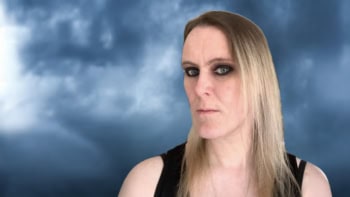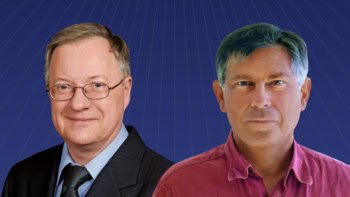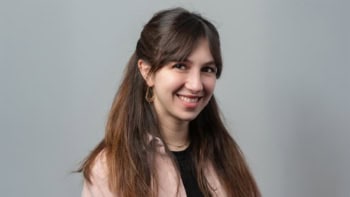David Jenkins is head of the nuclear-physics group at the University of York, UK.
This post is part of a series on how the COVID-19 pandemic is affecting the personal and professional lives of physicists around the world. If you’d like to share your own perspective, please contact us at pwld@ioppublishing.org.

We all remember the pictures of the famous Solvay conferences in the 1910s and 1920s, where the foundations of the “new physics” and quantum mechanics were discussed. A group of distinguished, wing-collared and moustachioed Edwardian gentlemen admits a single interloper in the form of Marie Curie. It was all a very different age.
But are our present-day conferences really more diverse? At first glance, they seem to be, as advisory committees challenge themselves to support diversity and gender inclusion.
However, we often choose to ignore the barriers to involvement of participants: those whose family situation does not allow them to travel, those who are uncomfortable to travel because of hostility to difference in the host country particularly attitudes to gender, race, homosexuality or disability.
A bigger issue still is the difficulty in including those who don’t have the resources to travel. Some conferences offer bursaries but nowhere near the levels needed to include large numbers of participants from developing countries.
If 2020 has taught us anything, it’s that our ability to communicate across the planet and talk “face-to-face” is limited only by our internet bandwidth.
We exacerbate this issue by holding conferences at which the main event is, in practice, a skiing holiday, or beach holiday, or safari excursion with conference talks pushed to the margins to facilitate freeing up the day for leisure. Many see their involvement in such conferences as “a perk of the job”.
If 2020 has taught us anything, it’s that our ability to communicate across the planet and talk “face-to-face” is limited only by our internet bandwidth. Recently, I was privileged to be part of an online conference that promises to change how we view such events forever.
Entitled “Tastes of nuclear physics”, it is one that I have supported for some years. It began 10 years ago at the University of Western Cape (UWC) – a historically-disadvantaged university in South Africa.
Its driving force is Nico Orce, who initially devised the “Tastes of nuclear physics” as a way of bringing foreign visitors to UWC to teach students on their MaNuS (Masters of nuclear science) programme about nuclear physics in a “summer school” format.
Since then, the event has grown and grown. Last year, it travelled 2000 km to the University of Zululand and hundreds of undergraduate students there also attended and heard speakers not only on the state-of-the-art but inspiring speakers who talked about their own careers and surmounting the challenges they had felt growing up in South Africa.
This year, we had to go online but we made it our mission to include any young people working in nuclear physics wherever they were in the world.
I feel it is no exaggeration to say that this year’s tenth anniversary “Tastes” on-line on Zoom was a historic event. The technology actually worked: the first speaker was in Australia, the chair was in the UK and the first question came from a scientist in India.
The sessions were punctuated with videos of the UWC choir singing that made you want to get up from the Zoom slump and jig about.
Students from all over the world joined including from Lebanon, India and, of course, South Africa. They asked questions and interacted with the speakers in virtual coffee breaks. We also recorded the lectures and rebroadcast them on YouTube for those with poor internet connections.
The diversity of the participants and speakers was impressive. We had talks from South African scientists on their own work in nuclear physics, the application of nuclear-physics technology to improving diamond mining, and again, saw role models speak about their careers.

Physics in the pandemic: ‘my winter solstice in Latvia will be a time of reflection’
The sessions were punctuated with videos of the UWC choir singing and renditions of “Gimme hope Jo’anna” and other music that made you want to get up from the Zoom slump and jig about.
Parts of the conference were moving and inspirational, particularly the “Women in science” session and the award of prizes from sponsors to some MaNuS students for publications they had lead.
We heard, for example, of one student, an orphan, whose sister had sat selling vegetables on the side of the road to pay for his university studies. I was left feeling at the end of the conference, as I have at many points in this turbulent year, that some things had significantly changed.
We all miss conferences where we can meet face-to-face but, as we hopefully return to something more like normality in 2021, let’s see how we can retain benefits for the many and not for the privileged few.



